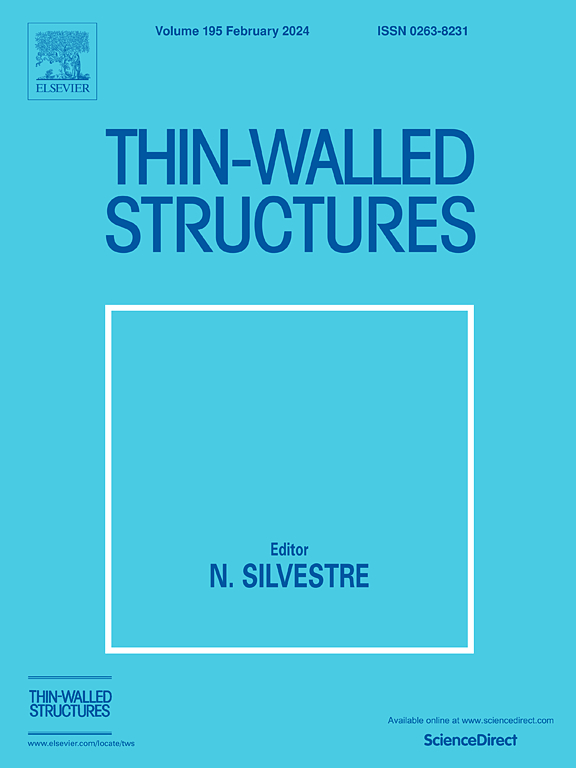Experimental and numerical research on deformation of square plates with circular holes under blast load
IF 5.7
1区 工程技术
Q1 ENGINEERING, CIVIL
引用次数: 0
Abstract
The response and failure of plates under blast loads are critical concerns in engineering. Plates with preformed holes may exhibit significantly different behaviors compared to those without holes, and detailed research on this topic remains limited. In this study, the deformation of square plates with circular holes subjected to blast loads was investigated through experiment and simulation methods. Square plates with circular holes were designed with three hole positions and two hole diameters. Far-field explosion experiments measured the displacement fields of the plates and the overpressure on the plate frame. Subsequently, LS-Dyna simulation models were established using a two-dimensional model to three-dimensional model mapping, with numerical results aligning with experimental results. Additional numerical calculations with larger charge mass supplemented the experimental cases, analyzing the influence of holes on plate response. It was found that the presence of a hole influenced the displacement field, with notable local effects such as significantly increased displacement near the hole. The presence of a hole can shift the position of maximum equivalent plastic strain from the plate edge to the hole edge. The influence of the size and position of a hole on the deformation and equivalent plastic strain were discussed.
带圆孔方形板在爆炸荷载下的变形实验和数值研究
板材在爆炸荷载下的响应和破坏是工程中的关键问题。带预制孔的板材与不带预制孔的板材相比,可能会表现出明显不同的行为,而这方面的详细研究仍然有限。本研究通过实验和模拟方法研究了带圆孔的方形板在爆炸荷载作用下的变形。带圆孔的方形板设计有三个孔位和两种孔径。远场爆炸实验测量了板的位移场和板框上的超压。随后,利用二维模型到三维模型的映射建立了 LS-Dyna 模拟模型,数值结果与实验结果一致。在实验案例的基础上,又进行了更大装药量的数值计算,分析了孔洞对板响应的影响。结果发现,孔的存在会影响位移场,并产生明显的局部效应,如孔附近的位移显著增加。孔的存在会将最大等效塑性应变的位置从板边缘移至孔边缘。讨论了孔的大小和位置对变形和等效塑性应变的影响。
本文章由计算机程序翻译,如有差异,请以英文原文为准。
求助全文
约1分钟内获得全文
求助全文
来源期刊

Thin-Walled Structures
工程技术-工程:土木
CiteScore
9.60
自引率
20.30%
发文量
801
审稿时长
66 days
期刊介绍:
Thin-walled structures comprises an important and growing proportion of engineering construction with areas of application becoming increasingly diverse, ranging from aircraft, bridges, ships and oil rigs to storage vessels, industrial buildings and warehouses.
Many factors, including cost and weight economy, new materials and processes and the growth of powerful methods of analysis have contributed to this growth, and led to the need for a journal which concentrates specifically on structures in which problems arise due to the thinness of the walls. This field includes cold– formed sections, plate and shell structures, reinforced plastics structures and aluminium structures, and is of importance in many branches of engineering.
The primary criterion for consideration of papers in Thin–Walled Structures is that they must be concerned with thin–walled structures or the basic problems inherent in thin–walled structures. Provided this criterion is satisfied no restriction is placed on the type of construction, material or field of application. Papers on theory, experiment, design, etc., are published and it is expected that many papers will contain aspects of all three.
 求助内容:
求助内容: 应助结果提醒方式:
应助结果提醒方式:


